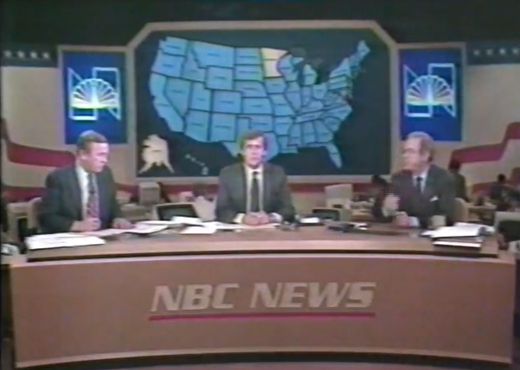In this year’s election, nearly 2.8 million of the commonwealth’s approximately 5.9 million registered voters voted early or by mail-in ballot. Having voted before the country’s official Election Day, those folks knew that they would have longer to wait to know the outcome. As it turns out, we all do, despite what the news channels might tell us on the evening of November 3.
Since 1952, when CBS considered using the Universal Automatic Computer, or Univac, to predict the results of the contest between Dwight Eisenhower and Adlai Stevenson, predictions based on computer analysis of early election returns have featured heavily in election night media coverage. Incidentally, CBS opted not to broadcast Univac’s prediction, which turned out to be correct! These media projections have given most Americans the impression that elections are decided on that night; however, the process for an official outcome is considerably longer, especially during a presidential election.

CBS News, Election Night, 1964.
Screen grab, YouTube.com.
Day One
This year, Election Day was on Tuesday, November 3. On that day polling places around the commonwealth were staffed by volunteer elections officers (hat tip to those dedicated citizens) who oversaw the conduct of their precinct’s election.

Glenn Smith, LVA's Records & Information Management Analyst, volunteers at the polls during the 2020 election.
Once the polls closed, the officers of the election locked each voting machine and then proceed to ascertain the outcome within the precinct. The election officers cannot adjourn until they submit the results of the election and a statement of results is completed.
Following that process, the poll books, statement of results, and ballots are sealed and delivered to the Clerk of the Circuit Court for that locality or to the office of the General Registrar.
Day Two
On the day following Election Day, in this case November 4, at or before 5:00 p.m., the electoral board meets at the office of the Clerk of the Circuit Court or the General Registrar. An adjournment of this meeting is allowed, but for no more than 7 calendar days after Election Day. At the meeting, the board opens each precinct’s returns and determines the candidates or, in the case of president and vice president, electors (more on this in a bit) with the most votes. Once those results are ascertained, they are signed and attested.
Once the electoral board has determined which candidate or slate of electors has received the highest number of votes, an abstract of the votes for each office or position is made. The abstract is mailed or hand delivered to the State Board of Elections in Richmond.
Day Fourteen
On the first Monday after the second Wednesday in November, in this case November 16, the State Board of Elections meets. The board examines the certified abstracts from the localities’ electoral boards and determines the whole number of votes given to each candidate or slate of electors. After determining which candidate received the greatest number of votes, Certificates of Election are issued to those candidates.
Virginia State Board of Elections, Certificate of Vote for President and Vice President of the United States of America, 2008 December 15.
Accession 44066, State government records collection, The Library of Virginia.
Day Forty-Four
Next, on the first Monday after the second Wednesday in December (this year it will be December 14), the presidential and vice presidential electors, who are equal in number to the number of senators and representatives representing Virginia in Congress, will meet at the Virginia State Capitol. In this meeting of the Electoral College, the electors cast their votes for the president and vice president based on the outcome of the popular vote. Certificates of Vote and Certificates of Ascertainment are produced and signed, denoting the results of the Electoral College. The certificates are then conveyed to the President of the Senate, the Virginia Secretary of the Commonwealth, the Archivist of the United States, and a district judge of the locality where the electors meet.
Day Sixty-Five
Finally, on January 6, 2021, at 1 p.m., the Senate and House of Representatives will meet jointly in the Hall of the House of Representatives. At this session, certificates from each state’s Electoral College will be opened and read into the Congressional Record alphabetically by state. They will then be tallied and the results certified by both bodies. At the close of day sixty-five, the presidential election is officially concluded.

CBS News, Election Night, 1988.
Screen grab, YouTube.com.
So, even though the TV graphics are much fancier and the predictions no longer require a one-car garage-size computer to determine, it is still true that elections are not officially decided until all votes are counted and the results certified.
Header Image Citation
NBC News, Election Night, 1984. Screen grab, YouTube.com.







